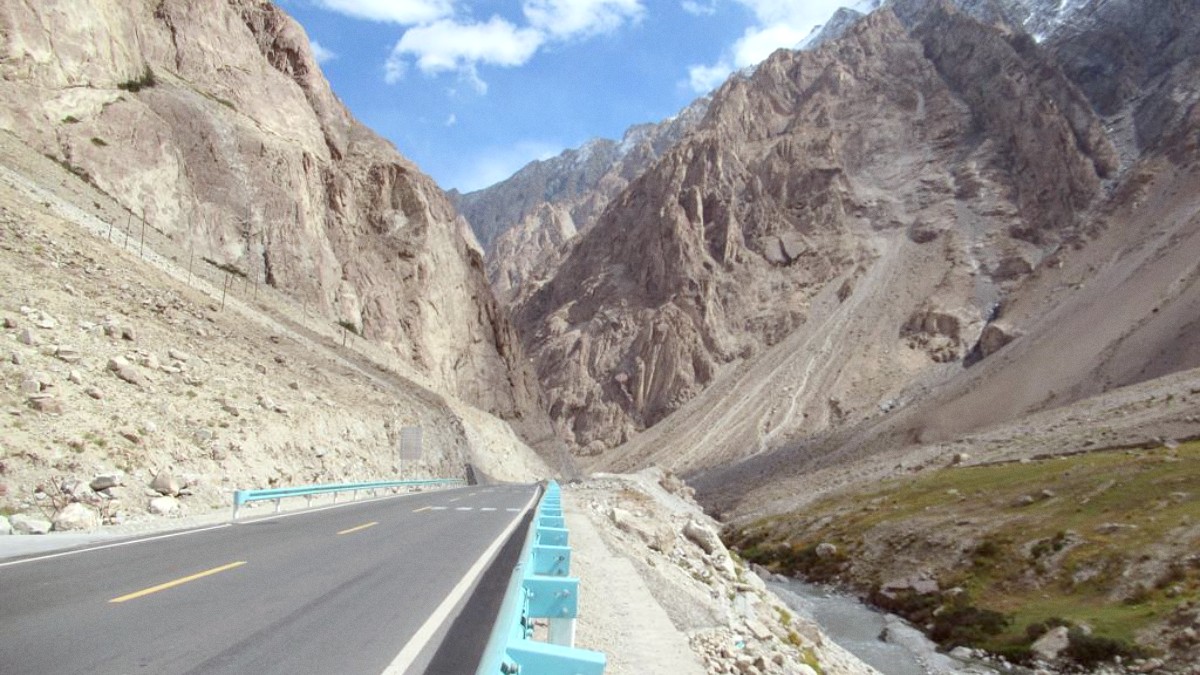
Pakistan
Temperatures and accessibility vary greatly by season.
The Karakoram region experiences clear seasonal shifts. Spring and autumn offer pleasant temperatures and scenery. Summer is the warmest, ideal for high-altitude exploration. Winter brings cold and heavy snow, limiting access.
Each season presents different travel experiences. Choose based on your preferences for crowds, weather, and activities.
The high season is best for full accessibility, but shoulder seasons offer a quieter journey with unique natural beauty. Low season travel is for those seeking solitude and winter landscapes, accepting limited access and colder conditions.
June-August
All roads open, ideal weather for all activities, valleys lush, long daylight hours.
More crowds, higher prices for accommodation and transport.
April-May & Sep-Oct
Fewer crowds, pleasant temperatures, stunning natural beauty (blossoms or autumn colors).
Khunjerab Pass might close early spring, some high-altitude treks inaccessible, unpredictable weather.
November-March
Very few tourists, serene travel, unique winter landscapes.
Extremely cold, heavy snow closes roads, limited services, difficult travel.
Landslides are common, especially during spring thaw or after heavy rains. They cause sudden road closures and delays. Always account for this possibility. Local drivers often have the best information on current road conditions.
Altitude sickness is a concern at higher elevations. Khunjerab Pass, at 4,693 meters (15,397 feet), presents a high risk. Gradual acclimatization is important. Travelers ascend slowly, stay hydrated, and recognize symptoms.
Heavy snow closes Khunjerab Pass from November to April/May. Check road status.
Best months are June to September for clear trails and stable weather.
Visit between June and October for pass operations.
Timing varies; check local calendars for dates.
Consult local drivers and guides for current conditions.
Travelers to Pakistan must meet specific visa and entry requirements. These rules can change, so always check the latest information from official government sources before your trip.
Pakistan provides an e-Visa facility for many nationalities. This online system simplifies the application process.
Gathering the correct documents is important for a successful visa application and smooth entry.
Pakistan offers value for money compared to many Western destinations. Costs vary widely based on your travel style.
These estimates offer a general idea for daily spending. Costs vary based on your specific choices and negotiation skills.
PKR 4,000-8,000 (USD 15-30) daily. Expect basic guesthouses, street food, public buses, and low-cost attractions.
Economical travel, authentic local meals.
Minimal amenities, reliance on public transport schedules.
PKR 9,000-18,000 (USD 30-60) daily. Stay in comfortable hotels, mix local and hotel dining, use comfortable buses or shared jeeps.
Good balance of comfort and local experience.
Occasional private transport raises costs.
PKR 20,000+ (USD 70+) daily. Choose boutique hotels, fine dining, private vehicles, and domestic flights for time savings.
Premium services, comfortable travel, exclusive experiences.
Highest daily expenses.
| Category | Accommodation (PKR/night) | Meals (PKR/meal) |
|---|---|---|
| Budget | 1,500 - 3,000 | 200 - 500 |
| Mid-Range | 4,000 - 10,000 | 800 - 2,000 |
| Luxury | 10,000 - 30,000+ | 2,500+ |
Prioritizing health and safety is important for a rewarding Karakoram Highway trip. This region, while generally safe for tourists, presents unique environmental and logistical considerations.
Yellow Fever certificate needed only if arriving from a risk country.
Hepatitis A & B, Typhoid, Tdap, MMR, Polio, Rabies (for high-risk exposure).
Drink sealed Bottled water, avoid ice, eat hot, freshly cooked food, wash hands.
Altitude Sickness (AMS): Ascend gradually, hydrate well, avoid alcohol. Seek lower altitude if symptoms worsen.
The sun at high altitudes is intense. Protect your skin and eyes.
Insect bites: Less prevalent at very high altitudes but present in lower valleys. Use repellent.
Use High SPF sunscreen, wear protective clothing (long sleeves, Wide-brimmed hat), and UV-protective sunglasses. Stay hydrated by drinking water regularly.
Basic hospitals in major towns (Gilgit, Skardu, Karimabad). Facilities may be limited for complex conditions.
Available in towns; carry all necessary prescription medications with sufficient supply.
Never drink tap water. Use sealed bottled water or a Portable water filter. Eat hot, freshly cooked food.
Gilgit-Baltistan is generally safe for tourists, known for local hospitality. However, be aware of specific risks.
Comprehensive travel insurance is highly recommended. Know your emergency contacts.
Medical emergencies, emergency evacuation (important for high altitude), trip cancellation, lost luggage. Check World Nomads, SafetyWing, or Insubuy.
Read policy terms; some exclude high-altitude trekking. Confirm coverage for maximum expected altitude.
Police: 15, Ambulance/Rescue 1122: 1122, Fire: 16. Embassy/consulate contact. Local guides contact.